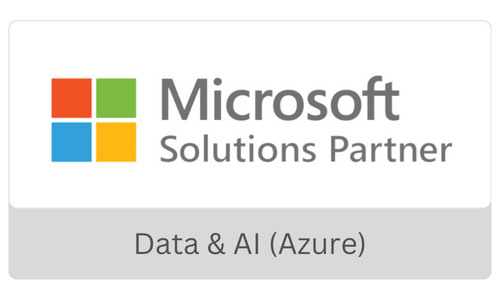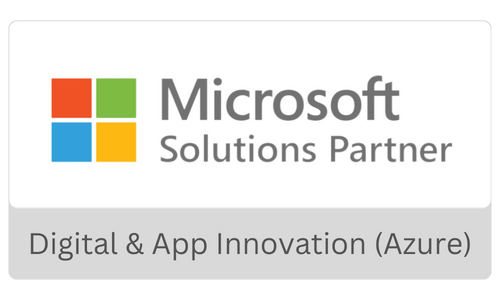With all the craze about Generative AI and LLMs in the last year, one thing we can all infer is that AI thrives on information or data. However, are machines really capable of thinking on their own? No, they aren’t; machines rely on the quality of the data fed into them. Machines imitate what an actual human would do, based on the accuracy and quality of the information we enrich. To achieve that, we need data annotation. It is a technique for categorizing and labeling data for AI model training. In fact, data annotation is the engine that steers all the innovation by transforming raw and unstructured data into an understandable format for Machine Learning algorithms. Without annotation, even the most advanced ML algorithms could not do anything with massive amounts of unstructured data.
Why Data Annotation is the Bedrock of AI and ML?
Structured data vs Unstructured data
We know that for any industry or enterprise, data is the prime asset. You can use it to study patterns, optimize workflows, create robust strategies, and whatnot. However, there are two types of data- structured and unstructured. AI-based automation can easily harness structured data, detect minute patterns, and give predictive insights. The problem arises with unstructured data in its original form- ML algorithms cannot make much sense out of them. However, this unstructured data, once harnessed, can be immensely valuable! Emails, social media posts, video posts, images, text documents, and more- are all unstructured but have a wealth of information that businesses can leverage to comprehend the customers, markets, moods, and operations and ultimately drive growth.
Tapping into the Unstructured data with Data Annotation
Did you know that a staggering 80% of the digital data gold mine consists of unstructured data? And if the ML algorithms cannot understand it, then all the data gold mine is useless. To keep up, you have to convert this unstructured data into a form that ML algorithms can read. This is where, you need data annotation! By properly and meticulously labeling data, data annotation enables ML algorithms to understand various content, their context, importance, and everything about them. As a result, the performance of ML models becomes directly related to the quality and quantity of annotated data. According to the Data Annotation Tools Market Size Report, 2030, it is valued at USD 1029 million in 2023 and projected to grow at a CAGR of 26.5% from 2023 to 2030.
Use cases of data annotation
The use cases of data annotation are tremendous, and you can harness it in any industry. Be it agriculture where you can use computer vision to track weeds and health of the plants, or public service by government bodies, medical science, mining, engineering, metal production, financial services, and much more. Data annotation can be used to benefit a wide range of industries. Let’s discuss some key ones here.
Healthcare
In healthcare, data annotation has brought about revolutionary transformations. Medical imaging and diagnostics are the major domains benefitting from annotated data. Radiologists can precisely detect life-threatening diseases by labeling CT scans, X-rays, MRIs, and PET scans and using annotated data and computer vision. Thus, whether it is medical imaging diagnostics or predictive analytics for patient outcomes, data annotation expedites the analysis of complex medical images and results in faster and more accurate diagnoses. Healthcare professionals can make informed decisions using AI-powered systems with precision and without ambiguity. It can enhance the patient treatment outcomes.
Automotive industry
How do self-driving cars drive – it is primarily because of data annotation. Data annotation gives vision to autonomous cars. Using the annotated data, cars can understand and function accurately and safely. The multiple cameras capture the images and videos while driving and detect and differentiate the objects ahead. Furthermore, data annotation is also revolutionizing safety norms and innovation in the automotive industry. With enhanced object recognition capabilities, AI systems can optimize traffic flow, reduce accidents, and thus assure safe transportation.
Financial services
You need annotated data for your AI algorithms in financial services to detect patterns, mitigate risks, and provide tailored solutions. In the finance domain, fraud detection, risk assessment, and provision of personalized financial services are pivotal to ensure growth and positive customer experience.
Retail industry
With next-gen retailing gaining momentum, retailers readily adopt AI to give personalized experiences and skyrocket customer experiences. Data annotation can be the key to unlocking the challenges that retailers face in optimizing their operations. Using annotated data, retailers can analyze consumer behavior, and based on that, the ML models can offer personalized recommendations. Moreover, retailers can leverage data annotation and ML for effective supply chain planning, inventory management, accurate demand forecasting, gathering real-time customer intelligence, and more.
Agriculture
With the help of a data annotation expert, an agriculturist can train AI models to monitor crops, detect diseases, and optimize resources. Data annotations can further empower automated machinery, resulting in efficiency and labor-saving operations. It ranges from assessing the soil quality to predicting weather conditions, ultimately enabling better decision-making. Similarly, AI models enable innovation and optimization in supply chain and genetic studies. Data annotation serves as the pillar to all these AI-driven practices that benefit sustainability and increase yields in agriculture.
Similarly, in manufacturing, from detecting defects using computer vision and annotated data to supply chain efficiency to satellite imagery, leveraging AI, and thus data annotation, gives astounding results.
Data Annotation – Best Practices
To achieve a Machine learning algorithm’s success, you must make sure that you follow the best practices and the highest standards in data annotation that are ethical and fair. Let me take you through some of the best practices in data annotation.
- Ethical guidelines: Having proper ethical guidelines is essential for data annotation. They must respect consent, privacy, and fair treatment. Since accuracy, consistency, completeness, and relevance play a pivotal role in data quality, data annotators must emphasize these aspects while aligning with legal regulations and industry standards.
- Ensuring data quality: Data quality is paramount for getting trustable outcomes from AI models. Thus, it would be best to execute continuous monitoring and improvement along with meticulous quality control measures to ensure the highest data quality in data annotation. You should also conduct audits and validate annotated datasets periodically to ensure high-quality data.
- Comprehensive training for annotators: The data annotators must undergo training to understand the nuances and ethical considerations of the tasks. Moreover, since it is a dynamic field, annotators must be abreast of the latest standards and thus need regularly updated training.
- Mitigate biases: Since the more diverse the training datasets are, the better (accurate and reliable) will be the AI outcomes. Thus, it is essential to rule out biases in the annotated data. For this reason, you should be mindful of the diversity in the annotated datasets and periodically review and update the guidelines.
Closing thoughts
With AI reshaping industries and expanding possibilities in every business and sphere of life, data annotation will continue to drive this innovation. However, the data annotation landscape is ever-evolving and very dynamic. To stay at the forefront of this transformation, organizations must be agile to adapt to new trends, methodologies, and technologies. We at Saxon AI are a bunch of tech enthusiasts and experts dedicated to optimizing operational efficiencies, enhancing customer experiences, and helping you with informed decision-making. The motive? We leverage AI and ML and tailor solutions to propel your business towards growth and success and give a competitive advantage. Do you need a tech partner to harness the best of these technologies? Please book a consultation now with our experts; we can help you find your use case and start your AI journey.
















